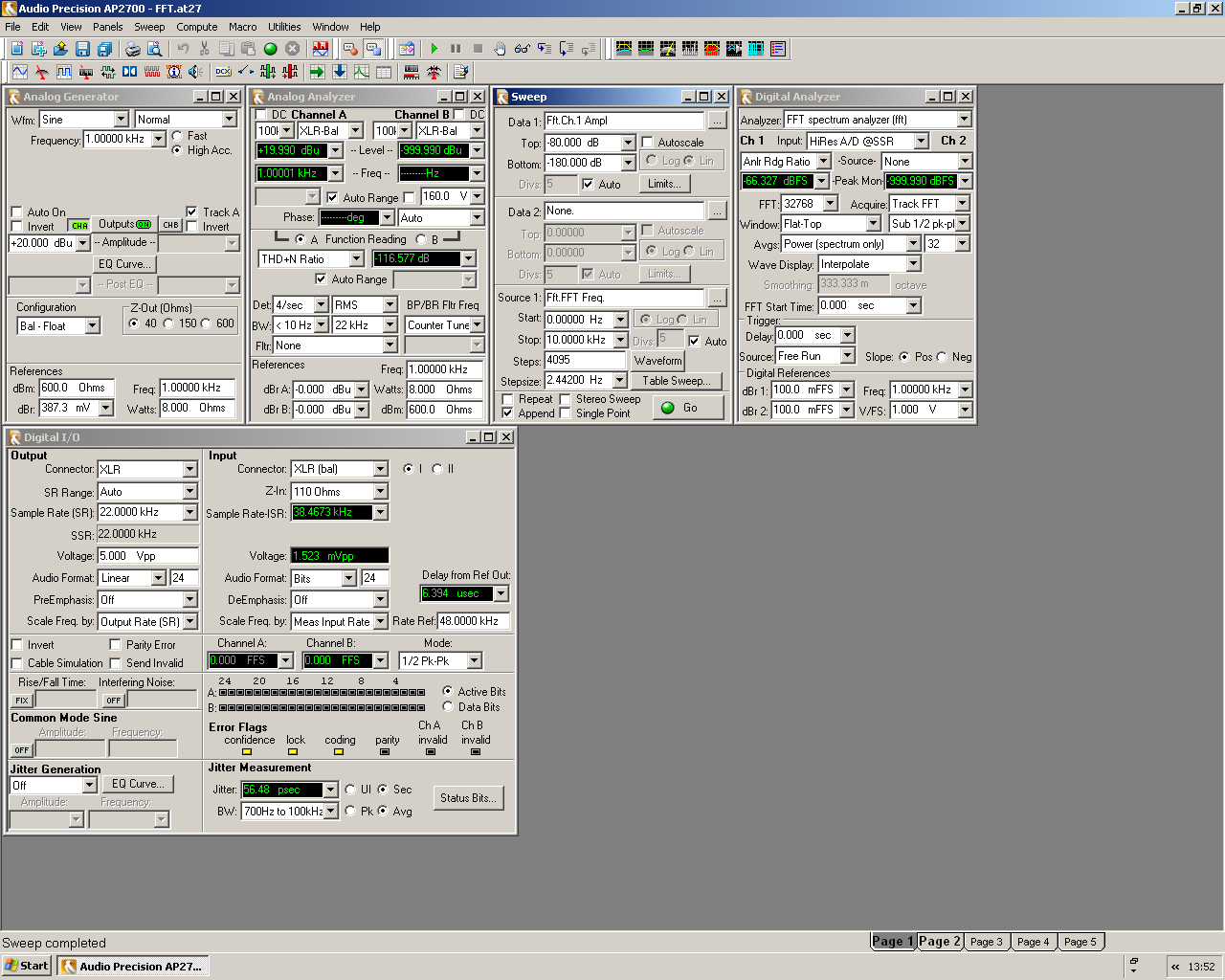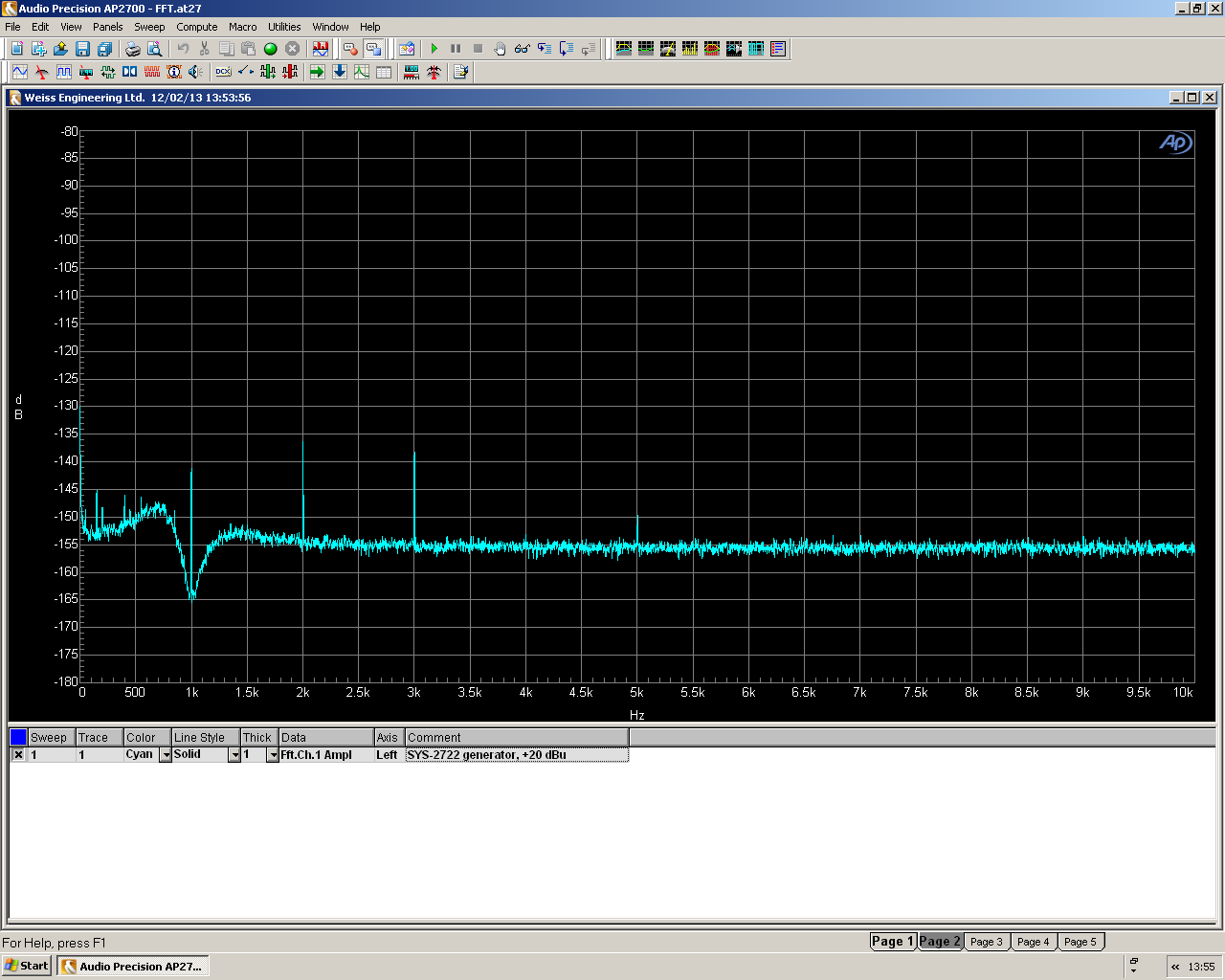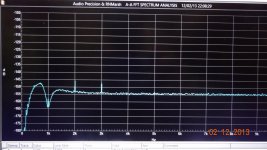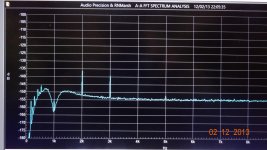Benchmark is using 2- 32bit DAC per channel from somewhere -- expect a 32bit ADC as well. Who makes those IC's?
You can find them at their web site. Or for their dual 32bit DAC info --- www.benchmarkmedia.com/dac/dac2-hgc\
I've been using their DAC-1 for years now as my preamp. Want to get this new one as soon as I can.
Thx-RNMarsh
You can find them at their web site. Or for their dual 32bit DAC info --- www.benchmarkmedia.com/dac/dac2-hgc\
I've been using their DAC-1 for years now as my preamp. Want to get this new one as soon as I can.
Thx-RNMarsh
Last edited:
Can you post a link to the benchmark stuff? I know they are fan's of async sample rate conversion. Others are less inclined to be so enamored of them.
High level really means close to full scale. The AK5394A seems to have few issues within 3 dB of full scale (see attached image).
Are the 4H and 5H real? Did you check them against the ShibaSoku 725?
But within 3db is pretty good. I could probably live with that if I had to.
-RM
I get only 2H and 3H - the other harmonics are way down. This is similar to other generators (HP, K-H etc). And, I ask because this is common with the 24 bit sound card and other 24 bit ADC I have tested and compared.
You just don't get accurate data below -100dB. The ADC/software starts producing harmonics -- I suspect it is in the internal software filters being used. And just plane old non-linearity. But when 4H and 5H are of such equal magnitude and harmonically related to fund... I think it is the filter algorithm to some degree.
And, yes the A-P and Panasonic and ShibaSoku analog results can measure lower than the 24 bit system. I love the FFT display but not useful yet at lowest harmonic testing of SOTA amps. I think I will have to use analog analyzer more often.... the Panasonic (such as VP-7723D) can measure harmonics and thd and thd+n and measures to .0003% F.S. -130dB source generator. 4 are on eBay now for USD $1600. A bargain.
Thx-RNMarsh
You just don't get accurate data below -100dB. The ADC/software starts producing harmonics -- I suspect it is in the internal software filters being used. And just plane old non-linearity. But when 4H and 5H are of such equal magnitude and harmonically related to fund... I think it is the filter algorithm to some degree.
And, yes the A-P and Panasonic and ShibaSoku analog results can measure lower than the 24 bit system. I love the FFT display but not useful yet at lowest harmonic testing of SOTA amps. I think I will have to use analog analyzer more often.... the Panasonic (such as VP-7723D) can measure harmonics and thd and thd+n and measures to .0003% F.S. -130dB source generator. 4 are on eBay now for USD $1600. A bargain.
Thx-RNMarsh
Last edited:
In the AP you are expected to put the FFT on the output of the analyzer. It will manage the calibrations etc. That's what you pay for. My budget is constrained so I need to work around these limits.
The non-linearity by definition will generate the harmonics. The filter stuff is really all about aliasing and has little impact below the cutoff frequency. The other stuff can be even the FFT software or the sine generator table. I tried a digital loopback and the harmonics were in the -150--160 range on the software I used. That is an algorithm issue. Not important for speaker measurement software but a quick survey for free software got me only 16 bit stuff. I have tried ARTA but I find it clumsy to use and somewhat limited. I don't know what to make of the 20 bit dither setting either.
The non-linearity by definition will generate the harmonics. The filter stuff is really all about aliasing and has little impact below the cutoff frequency. The other stuff can be even the FFT software or the sine generator table. I tried a digital loopback and the harmonics were in the -150--160 range on the software I used. That is an algorithm issue. Not important for speaker measurement software but a quick survey for free software got me only 16 bit stuff. I have tried ARTA but I find it clumsy to use and somewhat limited. I don't know what to make of the 20 bit dither setting either.
With a dedicated and fast cpu using XP, I can have the system up and available to you/others via remote control. You'll just have to send me product/prototype and I'll plug I/O and then you can test to your hearts content. You can run the whole instrument from your house.  And, when I am away in Asia I could loan it to you. You'll just have to check it out and set it up and debug the system until happy with its operation.
And, when I am away in Asia I could loan it to you. You'll just have to check it out and set it up and debug the system until happy with its operation.
[was referring to FFT filter algorithm in post #3244]
Thx-RNMarsh
[was referring to FFT filter algorithm in post #3244]
Thx-RNMarsh
Last edited:
Benchmark is using two 32 bit DAC per channel from somewhere--expect a 32 bit ADC as well. Who makes those IC's?
Probably ESS chips. I have extensive experience with those products, the 32 bit thing is just marketing.
Samuel
I think I managed to confound the points I was trying to make.
First a 24 bit audio converter can have low distortion without the really high accuracy of a precision 24 bit DC converter.
Second, that averaging is used to improve the accuracy of the precision converter/digitizer in a way that limits ac response.
Third (where I really was not clear) is how to generate a really low distortion very low frequency sine wave. I'm not sure that an RC oscillator can work that well at very low frequencies. Not to mention that the settling times could be measured in minutes or even hours, which would obviate any measurements of distortion until it is settled.
The larger point-that a digital capture system would have the same limitations that the previous measurement tools. Even the Fluke 8508 and the Agilent 3458 have analog preconditioning to optimize the measurement.
Agree. At sub-audio frequencies one could use a PWM DAC (as used for precision voltage sources, e.g. inside the Fluke 5730A). But I have also sketched a RC oscillator that goes down to 10 mHz (to investigate thermal effects e.g. in resistors); as the sample-and-hold-based approach works rather well at these low frequencies, settling time should be possible to push down to a few cycles.
Samuel
That's the way my Keithley 2015 distortion multimeter supposedly does it. It's only 6.5 digits so probably not better than -90 dB, if that. But works from DC.
Datasheet says fundamental frequency 20 Hz to 20 kHz, and residual THD+N -65 dB/THD -87 dB.
They once tried to sell me one as they knew I'm working in audio, and were quite surprised when I noted the specifications of the AP I'm using!
Samuel
Probably ESS chips. I have extensive experience with those products, the 32 bit thing is just marketing.
Samuel
That's good to know. Will we be seeing 32 bit ADC coming anytime soon for possible use for test equipment -- replacing some sound card-like products now using 24bit???
Thx-RNMarsh
Will we be seeing 32 bit ADCs coming anytime soon for possible use for test equipment--replacing some sound card-like products now using 24 bit?
No (someone will write 32 bit on its leaflet, but that won't mean anything).
Samuel
If you can just give me a screen dump picture of the settings for Max resolution and accuracy, I'll manually copy them into a file/setting.
Here are the settings I'd recommend for a high-resolution FFT of a 1 kHz source for harmonic measurements up to 10 kHz:

With the generator of the SYS-2722 routed to this setup you should get something like this:

Let me know how this turns out.
Samuel
Actually checking my math over the audio bandwidth of 20,000 hertz 32 bits above the thermal noise of a 1 ohm resistor at room temperature would only be 78 volts. For a 1000 ohm input impedance it would become around 2500 volts. And for just under 25,000 volts for a 100K input impedance.
A-P setup for max resolution -
This is a GREAT help. Thank you so mucho !!

I'll refer others at the A-P theme thread to this.
-Richard Marsh
This is a GREAT help. Thank you so mucho !!
I'll refer others at the A-P theme thread to this.
-Richard Marsh
Here are the settings I'd recommend for a high-resolution FFT of a 1 kHz source for harmonic measurements up to 10 kHz:

With the generator of the SYS-2722 routed to this setup you should get something like this:

Let me know how this turns out.
Samuel
As the noise changes with the square root of R it would be around 7500 volts. Something you could handle with a bit of caution, but it might be hard on your loudspeakers.
25 real bits would give you 150 db range. I think that resolution is possible, but very difficult. Of course I want 27 bits!
25 real bits would give you 150 db range. I think that resolution is possible, but very difficult. Of course I want 27 bits!
Software works on WIN8 !!
The A-P now is working well thanks to some much needed user experience to help speed me up to par from Samuel G...... The internal gen/analyzer shows 2H and 3h at -145dB. Using the 339A generator as an external source, the A-P and the ShibaSoku AD725D are within 1dB of each other when measuring 2H or 3h to -130dB at least. I have not checked at lower harmonics levels, yet.
Thanks to the loan of the manuals with schematics of the Panasonic models from Stellavox ..... I have a good idea of what to do to reduce the 2H on my VP-7722A. The osc has a 2H trim adjust The Panasonic is accurate compared with the A-P 2722 and the ShibaSoku AD725D down to -120dB. useable to -125dB. But the 2H dominates from its internal signal gen .... If I can tune/trim the 2H down to it's 3H level (-130dB) this will be a quick and easy instrument to use to measure THD and THD+N and Individual Harmonics to 5H (and does IM tests, too).
The Panasonic is accurate compared with the A-P 2722 and the ShibaSoku AD725D down to -120dB. useable to -125dB. But the 2H dominates from its internal signal gen .... If I can tune/trim the 2H down to it's 3H level (-130dB) this will be a quick and easy instrument to use to measure THD and THD+N and Individual Harmonics to 5H (and does IM tests, too).
Thx-RNMarsh
The A-P now is working well thanks to some much needed user experience to help speed me up to par from Samuel G...... The internal gen/analyzer shows 2H and 3h at -145dB. Using the 339A generator as an external source, the A-P and the ShibaSoku AD725D are within 1dB of each other when measuring 2H or 3h to -130dB at least. I have not checked at lower harmonics levels, yet.
Thanks to the loan of the manuals with schematics of the Panasonic models from Stellavox ..... I have a good idea of what to do to reduce the 2H on my VP-7722A. The osc has a 2H trim adjust
Thx-RNMarsh
Last edited:
- Home
- Design & Build
- Equipment & Tools
- Low-distortion Audio-range Oscillator

